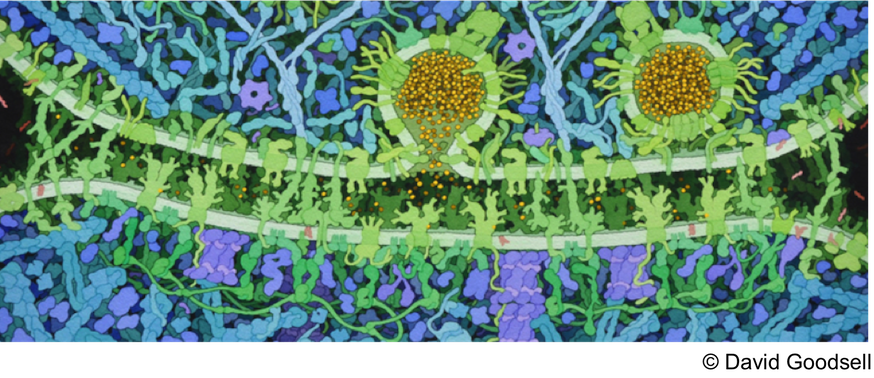Inwardly-rectifying potassium (Kir) channels regulate membrane electrical excitability and K+ transport in many cell types where they control such diverse processes as heart rate, vascular tone, insulin secretion and salt/fluid balance. The physiological importance of eukaryotic Kir channels is highlighted by the fact that genetically-inherited defects in Kir channels are responsible for a number of human diseases such as in Andersen's syndrome (Kir2.1), Bartter syndrome (Kir1.1), and neonatal diabetes (Kir6.2). To date, the available treatment is unfortunately not rational but rather empirical and this is mostly due to the lack of knowledge about atomic structure of these channels.
To elucidate how channel function becomes defective in the disease state requires a detailed understanding of channel structure in both the open and closed states. We have reported the structure of a homologous bacterian KirBac3.1 potassium channel with an open bundle crossing indicating a mechanism of channel gating determined by X-ray crystallography at 3Å resolution. In this model, the rotational twist of the cytoplasmic domain is coupled to opening of the bundle-crossing gate via a network of inter- and intra-subunit interactions [1,2]. In addition, we have also used EM analysis of 2D crystals of the same Kirbac channel trapped in an open state and compared these results with the 3D structure [3].
We are now focusing in characterizing the structural determinants correlated to malfunctioning behind Andersen mutants forms. We are therefore studying the structure of the human potassium channel kir2.1. The full-length homologous human Kir2.1 (50 kDa the monomer, 200kDa the tetrameric functional form) was over expressed in yeast Pichia Pastoris and subjected to various method for its characterization.
Here we show preliminary results on the expression in yeast Pichia pastoris, the purification and the imaging of isolated kir 2.1 in detergent by cryo-electron microscopy. The particles have an averaged size of 12 nm consistent with a tetrameric form of the native channel. The oligomeric organisation is supported by native gel electrophoresis and DLS measurements.
Our results will hopefully contribute to uncover the mechanism of clinically-relevant disease-causing mutations on the structure, dynamics, and function of kir2.1 potassium channels and at investigating the potential of pharmaceutical correctors.

 PDF version
PDF version
